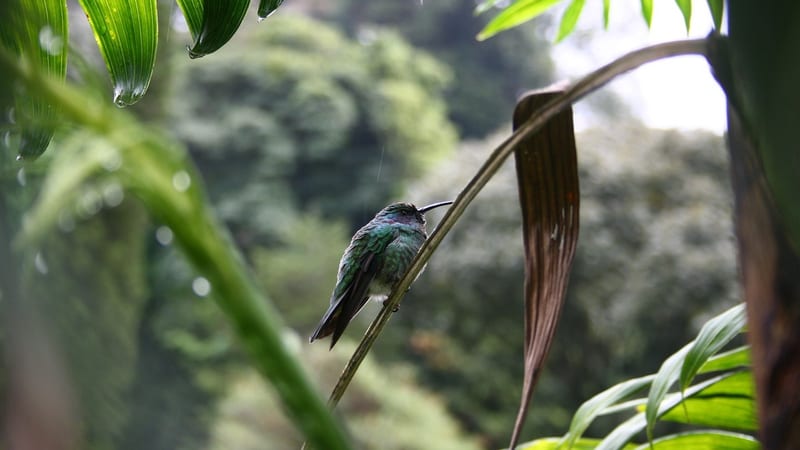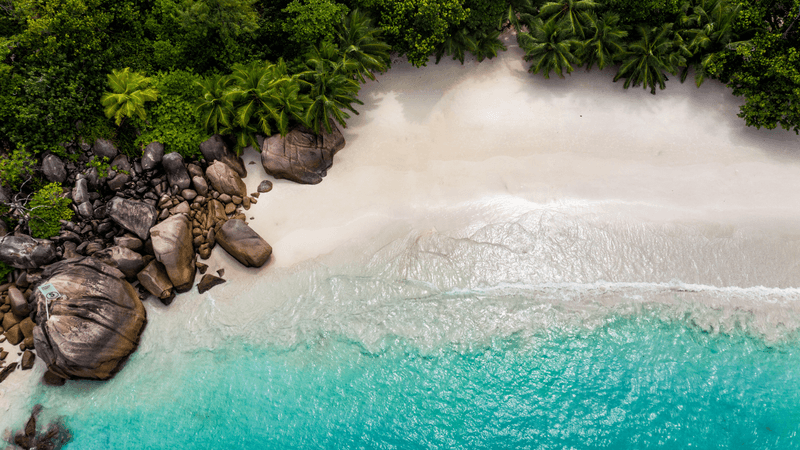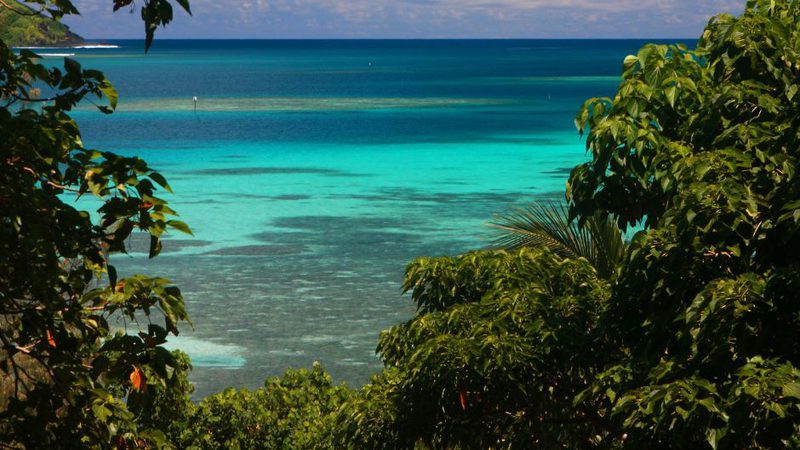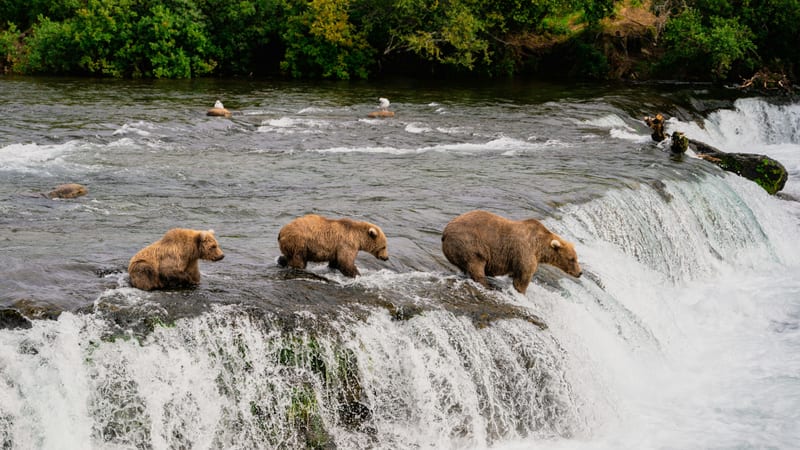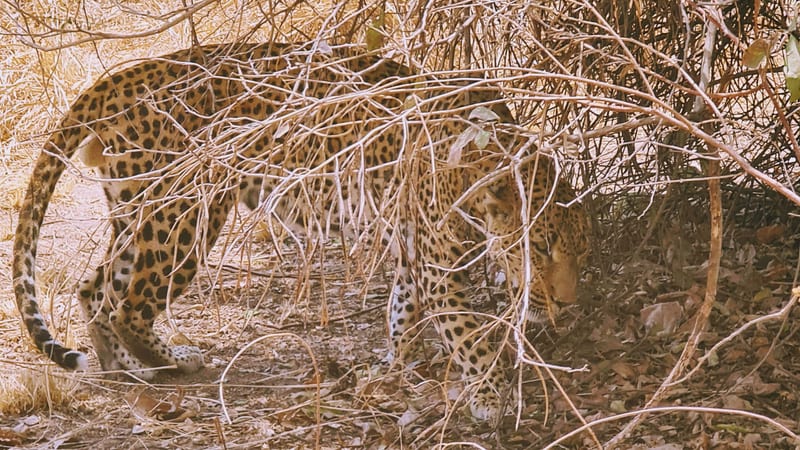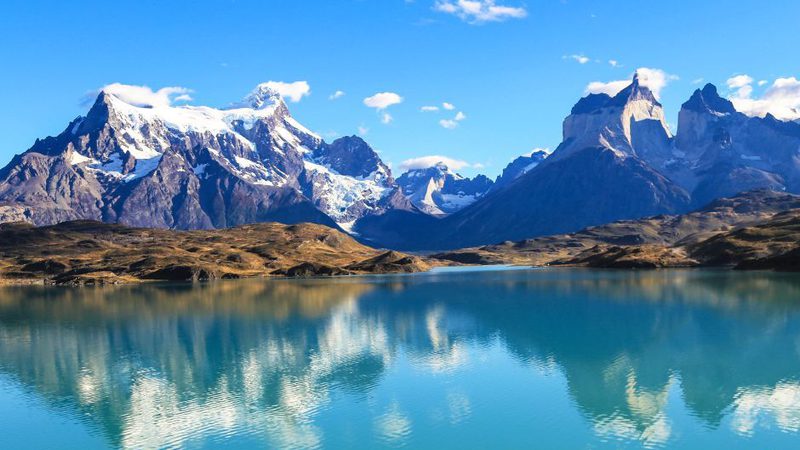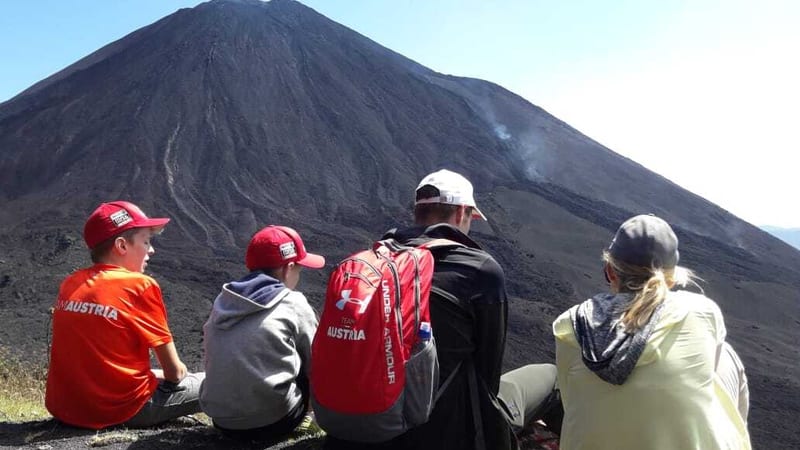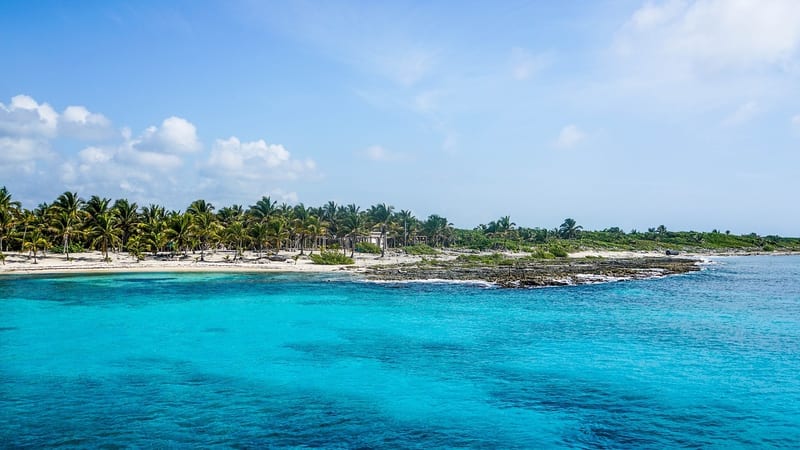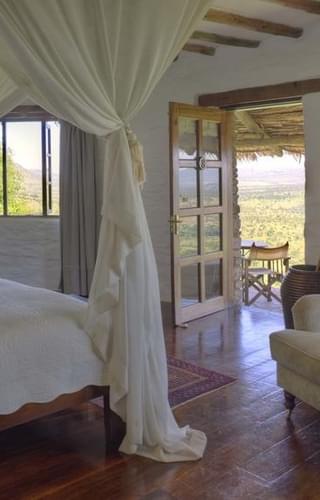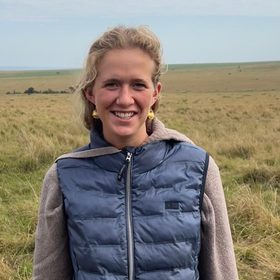This private 10,000 acre wildlife concession is leased from Maasai landlords and is available for the sole use of the camp’s 20 guests.
Location: Located on the edge of the Kuka Hills within a private 10,000-hectare Maasai-leased concession in northeastern Serengeti, Klein's Camp offers sweeping views across rolling valleys and distant hills. Far beyond the tourist crowds, wildlife roams freely here within sight of camp, while both migration routes and resident big cats are core features of this remote and privileged wilderness setting in northern Tanzania.
Rooms: The camp comprises ten elegant stone-and-thatch cottages, each featuring traditional rustic interiors with thick wooden floors, open-plan bedrooms, private verandahs and en-suite bathrooms warmed by hot-water tanks heated by firelights. Rich textiles and antique-style furnishings evoke colonial safari luxury, with individual Maasai escorts accompanying guests at night.
Amenities: Communal spaces include a beautifully furnished open-air bar, lounge and dining tent, complete with a central fireplace and a safari curio shop stocked with local crafts. A hillside swimming pool offers a serene spot to unwind. The camp also provides Wi-Fi in public areas, safari-charging stations, high-end dining, and all meals are served with exceptional attention to detail in refined yet relaxed surroundings.
Activities: Guests enjoy twice-daily open-vehicle game drives across a private concession that allows off-road driving, bush walks and night drives, unique in the Serengeti. This grants exceptional closeness to wildlife, including resident lions, elephants, cheetah and black eagle sightings. Optional excursions include sunrise hot-air balloon safaris, visits to authentic Maasai villages, and guided walking safaris across ochre hills and plains.
Sustainability: While explicit sustainability initiatives are less publicised, Klein's Camp is deeply rooted in conservation and community collaboration. Its Maasai-leased concession model supports local land stewardship. Staff are recruited locally, traditional materials are used in construction, and the boutique operation maintains low guest numbers - minimising land impact and preserving the wild Serengeti landscape.
Best places to stay in Serengeti Safaris
Serengeti Safaris Trip Inspiration
When to visit Tanzania
Find out the best time to visit Tanzania with our month by month guide.
- Best
- Good
- Mixed
- Jan
- Feb
- Mar
- Apr
- May
- Jun
- Jul
- Aug
- Sep
- Oct
- Nov
- Dec
January
January is mixed when it comes to weather, temperatures rise whilst the chance of rain and humidity increases. It is still a good time to go, as the rates are lower yet the game viewing is still excellent.
- During this time migratory herds are in the Serengeti for calving season, meaning the Ndutu plains are busy.
February
The weather remains hot with a chance of rain in February.
- Meanwhile in the Ndutu Plains the migration is still occurring.
March
March is the calm before the storm, before heavy rains and humidity builds. Visitors can take great advantage of lower rates during the low season.
- Migrating herds start to leave Ndutu, heading West towards Grumeti.
April
April experiences continued periods of heavy rain, we would advise against travel due to the conditions.
May
During may there is periods of heavy rain, we would advise against travel due to the conditions.
June
June heralds the wet season, bringing lush green vegetation which can make spotting game more difficult. It is a particularly great time for birders as parks become populated by migratory birds especially in the South.
- Migration is still in the Grumeti area, heading north.
July
July is the start of peak season, temperatures reach up to 30 degrees and the surrounding land becomes drier and spotting game is becoming easier.
- The migration is in the Northern Serengeti moving towards Kenya.
August
August is peak season, with bush land drying out game spotting becomes much easier. If you want to experience Tanzania game at its best, August is the time to travel.
- The migration still remains in the north.
September
Peak season continues in September, the Northern circuit can be very busy, if you want to avoid crowds it's best to visit the southern parks.
- The end of the migration is still in the north with herds on both side of the Kenyan and Tanzanian borders.
October
Peak season continues into October with good game viewing in the Serengeti and southern parks.
- The migration has now crossed over into Kenya.
November
November is the start of the rainy season, the rains tend to be overnight so it is still a popular time to travel. During this month you can take advantage of low season rates.
- Migration crossing over into the Serengeti can be seen a the Tanzania and Kenya border.
December
Rains continue in December, whilst the temperature and humidity start to build. Venturing out on safari is generally good, with large game still easily spotted.
- Migrating herds in the north travel south back to Ndutu.
Speak to a Tanzania expert today
and start planning your tailor-made vacation

Alistair





